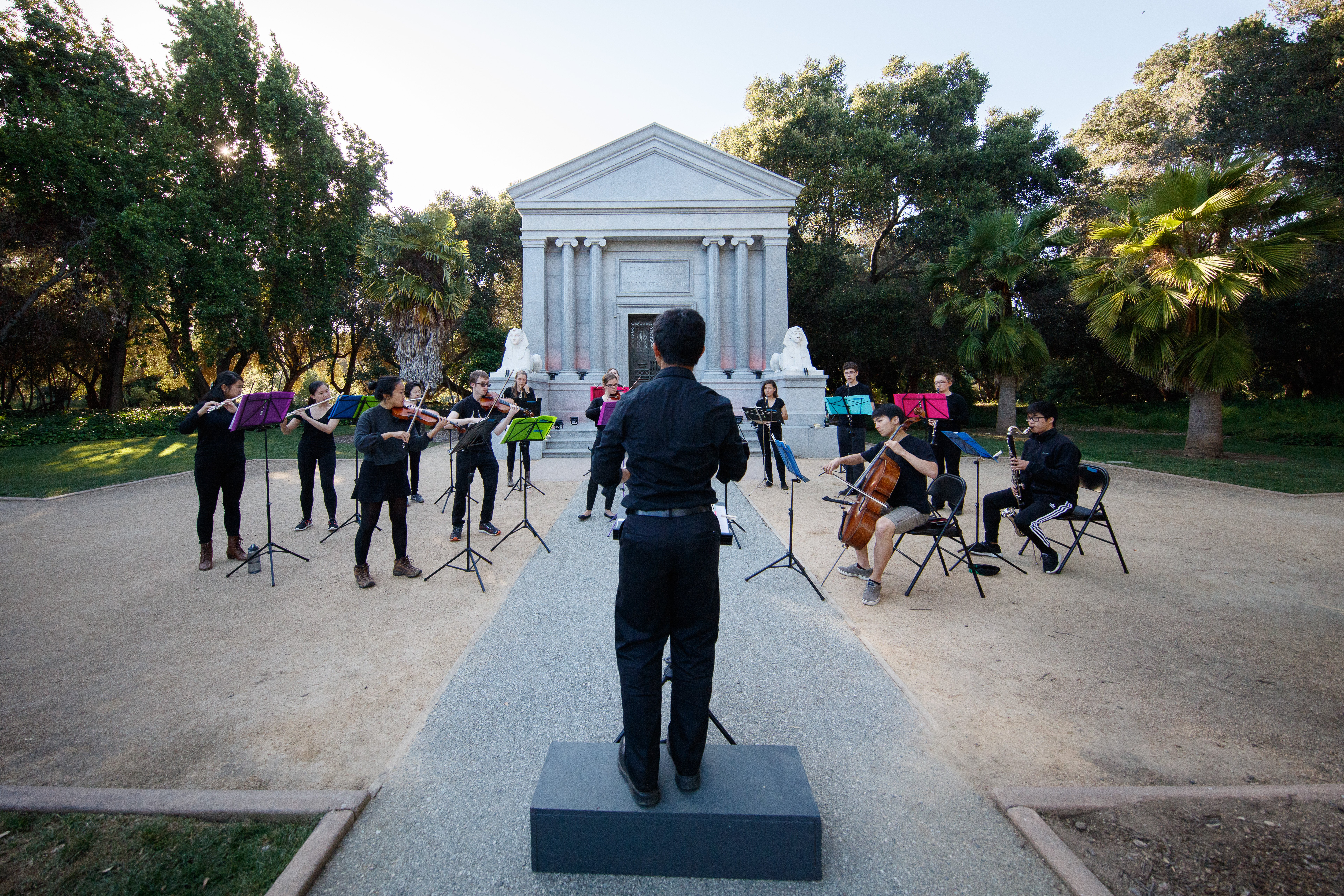Last week, I had the opportunity to see the site-specific and immersive performance of Mozart’s masterpiece “Don Giovanni” at The Stanford Mausoleum, put on by the Stanford Savoyards and the Stanford Arts Institute. Amongst a few issues I had with the space and concept of audience immersion, the warm spring outdoor setting combined with wonderful musical performances made for a beautiful evening out.
The performance had ambitious aims in manipulating The Mausoleum space to enhance the production, yet I had issues with the immersive concept for a few reasons. Upon entering, I was given a mask to wear for the entire performance (a fun concept and a charming souvenir to keep). I was also told that during the performance, I was free to roam around the entire perimeter of The Mausoleum and surrounding forest area/cactus garden. If I wanted a more linear experience to the show, I could follow one of the several guides dressed in black who also served as ensemble members.
In theory, the idea of experiencing different parts of the show on my own was exciting. However, when I roamed away from the guides, I was met with empty music stands and awkward improvisational moments from other characters instead of scenes I was hoping to observe. There were no set parameters for how far I could roam, so at one point I turned a corner and discovered a sort of backstage space where musicians and actors took breaks out of character. As I walked around alone, I was missing the main action of the show. Despite the idea of this being a fully immersive production, it became very clear that the only way to understand the storyline was to follow the guides. This provided a more fulfilling experience, yet was a drawback to their original intention.
Although the acting performances were at some points questionable, the musical talent of the cast was completely undeniable. Notable performances included Justin Cavazos ’16 as a dangerous Don Giovanni, who commanded the stage with his large gestures and booming voice; soprano Christina Krawec ’15 as heartbroken Donna Anna whose delicate tone hit the highest notes with the utmost ease; and Amanda Harris ’19 as vulnerable Zerlina, whose young-lover vulnerability shined onstage through her light voice and graceful movements.
I was also extremely impressed with the orchestra, a large company bursting with talent from the Stanford Symphony Orchestra and other groups across campus. Music Director Diego Hernandez ’17 kept the musicians together with ease, making each section sound like a single instrument.
Beyond the wonderful musical performances, I was impressed with how well The Mausoleum worked technically — among my favorite aspects of the show was how I got to watch the sun set eerily behind the forest throughout the opera’s themes of murder and deception. The beautiful scenery combined with the haunting statues and memorials of the Stanford family complemented the storyline of “Don Giovanni” perfectly.
The Savoyards made excellent use of this out-of-the-ordinary space. The performers did not have microphones, but the audience was so intimately watching the performance that I could hear their voices with ease. Furthermore, audience interaction during the scenes was a fun twist and kept me intrigued. The ensemble guides (who also had wonderful voices, I might add) invited audience members to dance during wedding and party scenes, and provided chilling background vocals that resembled surround sound during large dramatic numbers.
Although the opera was performed in its original Italian, which I expected would make it difficult to understand, spoken scenes in English provided context for the songs. Also, supertitles were streamed online during the musical numbers for further understanding.
Overall, I would definitely recommend this production to families and students looking for a fun night of outdoor performance. I appreciate the Savoyard’s use of the gorgeous Mausoleum space, which I believe is underutilized and suited the production well. As long as you follow the guides and bring a light sweater to “Don Giovanni,” you are in for a lively treat.
Contact Bella Wilcox at belwilc ‘at’ stanford.edu.
